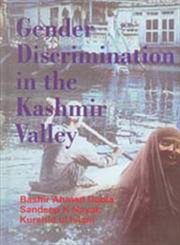Details
PUBLISHED
Made available through hoopla
DESCRIPTION
1 online resource
ISBN/ISSN
LANGUAGE
NOTES
The phenomenon of "gender discrimination" exists more or less in all societies of the world, irrespective of their differences in region, religion, economy, polity, education, culture, social structure and so on. The sociological studies carried out at the global level and in cross-cultural context have revealed that women in general were not considered equal to men at the social level and they were not allowed to become active partners in the processes of change and development. Like other societies/communities in the Indian subcontinent, the Kashmiri women faced certain set degree of gender-based discrimination in the traditional situation. However, as a result of cumulative effect of the processes of modernization, this situation has changed qualitatively as well as quantitatively. While the direction of this change stands towards their total development and emancipation, it has also given rise to some crucial problems for themselves. It was in the context of preceding social dynamics that this study was carried out in the Kashmir valley. This book is based on [a] revised version of the report of an extensive empirical study carried out in Baramulla and Budgam district in 1996-1997 among 600 [approximately] selected and representative respondents; and [b] proceedings of the National Seminar in Srinagar in August 1997 [organized jointly by UNICEF, New Delhi; Jammu and Kashmir Government; and Department of Sociology, University of Kashmir] which discussed the findings of the report and prepared a set of recommendations to negate and debase the practices related to gender discrimination in the valley. In brief, the book portrays the existing reality, in statistics and description, related to the phenomenon of gender discrimination in the Kashmir valley. Moreover, it suggests the action programme to reduce and finally negate these undesirable practices
Mode of access: World Wide Web







